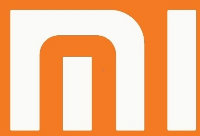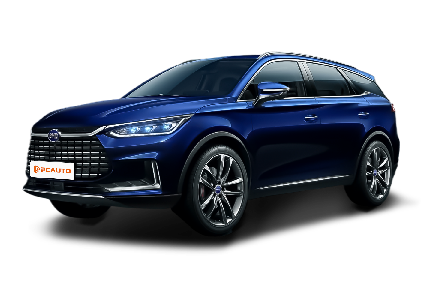Q
Is the BYD TANG an SUV?
Yes, the BYD TANG is a mid-size SUV that combines spacious interior, powerful performance, and advanced electric technology. It's a great fit for Malaysian families or car owners in need of ample space. As a 7-seater SUV, the BYD TANG offers excellent seating comfort and practicality. Meanwhile, its plug-in hybrid (PHEV) or pure electric (EV) versions also align with the global trend of energy conservation and carbon reduction, making it a good choice for environmentally-conscious Malaysian consumers.
Moreover, SUVs are highly popular in the Malaysian market as they're well-suited to the country's diverse road conditions, capable of handling both city driving and occasional out-of-town trips. The BYD TANG is also equipped with a wide range of intelligent technology features, such as a large touchscreen and a driving assistance system, which further enhance the driving experience.
If you're looking for an SUV that combines practicality, environmental friendliness, and a sense of technology, the BYD TANG is definitely worth considering.
Special Disclaimer: This content is published by users and does not represent the views or position of PCauto.
Related Q&A
Q
How fast can the BYD Tang charge?
As a high-performance electric SUV, the BYD Tang excels in charging speed. It supports DC fast charging of up to 110kW. It only takes about 30 minutes to charge the battery from 30% to 80%, which meets the needs of Malaysian users for long - distance travel or quick energy replenishment. When using a home AC charging pile (7kW), it takes about 8 - 10 hours to fully charge the battery, which is suitable for overnight charging.
For Malaysian consumers, charging efficiency is one of the key factors in the practicality of electric vehicles. The fast - charging ability of the BYD Tang is particularly practical against the backdrop of the gradual popularization of local public charging facilities. In addition, the charging speed of electric vehicles is also affected by factors such as battery temperature, charging pile power, and grid stability. It is recommended that users give priority to charging stations with high compatibility for the best experience.
With the Malaysian government's promotion of green travel and the continuous improvement of electric vehicle infrastructure, models like the BYD Tang with high charging efficiency will become a more convenient travel option.
Q
How long is the BYD TANG 7 seater?
The overall length of the 7-seater version of the BYD TANG is 4,870 millimeters. It's a mid - to large - sized SUV with a spacious body, making it ideal for family use. It's especially practical in Malaysia for large - sized families or situations where you often need to carry relatives and friends. This vehicle not only offers a comfortable 7 - seat layout but also boasts excellent range and advanced intelligent technology features. Take the DiPilot intelligent driving assistance system for example, which can enhance driving safety and convenience.
As a new - energy vehicle, the BYD TANG has also caught the attention in the Malaysian market. Its all - electric or plug - in hybrid versions can meet the diverse needs of different users and align with the global trend of energy conservation and emission reduction. For Malaysian consumers, choosing the BYD TANG means not only enjoying a large space and high - tech features but also experiencing the low operating costs of an electric vehicle. Additionally, with the local government's policy support for new - energy vehicles, such as tax exemptions, its appeal is further enhanced.
Q
How big is the BYD TANG compared to Model Y?
There are obvious differences in size between the BYD Tang and the Model Y. The 2025 BYD Tang has a length of 4,870 mm, a width of 1,950 mm, a height of 1,725 mm, and a wheelbase of 2,820 mm. Some versions of the Tang L even have dimensions of 5,040/1,996/1,760 mm and a wheelbase of 2,950 mm. In contrast, the 2025 Model Y has a length of 4,797 mm, a width of 1,920 mm, a height of 1,624 mm, and a wheelbase of 2,890 mm. It's clear that the BYD Tang surpasses the Model Y in length, width, and height, providing passengers with more spacious head and shoulder room. However, the Model Y has a longer wheelbase, which theoretically gives it an advantage in rear - seat legroom. Additionally, the Tang has a 5 - door, 7 - seat layout, making it suitable for large - family outings or carrying multiple passengers. The Model Y is a 5 - door, 5 - seat vehicle, more suitable for small families or daily commuting.
Q
How much horsepower does a BYD Tang have?
The horsepower varies among different models of the BYD Tang. In the DM - i series, the traditional combustion - powered version has a maximum horsepower of 160. The plug - in hybrid version can reach nearly 500 horsepower under combined driving conditions, and its peak performance is close to or exceeds the level where the official claims it can accelerate from 0 to 100 km/h in about six seconds. Some versions are equipped with a dual - motor four - wheel drive system, with a maximum combined performance of 517 horsepower. The Tang EV model uses a drive motor with a maximum power of 180kW (245 horsepower). Additionally, the maximum power of the Tang DM - p system can reach 452 kilowatts, which is over 600 horsepower after conversion. In short, the diverse power configurations can meet the power requirements of different consumers.
Q
What is the range of BYD TANG?
As a plug - in hybrid SUV, the BYD TANG has an electric range of approximately 81 kilometers (NEDC standard) in the Malaysian market, and its combined range can exceed 800 kilometers, which is suitable for daily commuting and long - distance driving needs. This model is equipped with BYD's advanced DM - i super hybrid technology. By combining the efficient engine and the electric motor to work in tandem, it not only has excellent fuel consumption performance but also provides a smooth driving experience.
For Malaysian users, the TANG's large - space design (7 seats as standard) and intelligent features (such as the DiLink in - car system) can well meet the needs of family travel. Meanwhile, its battery pack has passed strict safety tests and is suitable for use in the tropical climate.
It's worth noting that the Malaysian government has a policy of exempting import duties on electric vehicles, and buyers of PHEV models can also enjoy road tax incentives. These factors make the TANG more competitive in the local market.
In terms of charging convenience, the main cities in Malaysia are expanding their charging facilities, and the hybrid system can also eliminate range anxiety. It is recommended to check the latest prices and dealer test - drive services on the BYD Malaysia official website before purchasing a car.
Q
Does BYD TANG Support Apple CarPlay?
The BYD Tang supports Apple CarPlay. With this feature, drivers can use many functions on their iPhones in the car's central control system, such as playing music, navigating, making calls, reading text messages, and even watching online videos, which enhances driving convenience and safety. The central control display of the BYD Tang is equipped with the DiLink system, which is feature-rich, responsive, and easy to operate. It can be connected to the mobile phone via Bluetooth or USB mode. When using Bluetooth connection, click the Bluetooth icon on the screen to enter the settings. After turning on the Bluetooth function, you can set up automatic connection and other options. When using USB connection, turn on the USB function of your phone and connect it to the USB port in the car with a data cable, and the central display can read the media files in the phone. In addition, the central display also supports wireless Internet access. You can purchase system traffic or connect to the mobile phone's hotspot to get online.
Q
What type of charger is a BYD TANG?
The BYD Tang can use a variety of chargers. In a home setting, you can use a regular 220 - 240V, 50Hz socket that meets local standards and pair it with the charging cable provided with the vehicle for slow charging. In Malaysia, the large three - pronged square - shaped British standard sockets are used, which can meet the basic charging needs, but the charging speed is relatively slow. There are also wall - mounted home chargers available. They usually come in different power specifications, such as 7kW, and can speed up the charging process. It's quite convenient to install them in a private parking space or garage. When it comes to public charging facilities, there are DC fast - charging stations to choose from, which can replenish a large amount of power for the vehicle in a short time, meeting the needs of emergency trips. In addition, there are also some compatible portable charging guns on the market, which you can choose to use according to the actual situation. All these chargers aim to provide users with diverse charging methods to meet the charging needs of the BYD Tang in different scenarios.
Q
Is the BYD TANG 4x4?
The BYD Tang is a plug-in hybrid SUV. It does offer a four-wheel drive (4x4) version, which is equipped with BYD's advanced DM-p super hybrid technology. The all-time four-wheel drive capability is achieved through the coordinated operation of the front and rear dual motors and the engine, making it suitable for the rainy and humid road conditions in Malaysia or for light off-road needs.
This model has a pure-electric range of over 100 kilometers, balancing environmental friendliness and power performance. The four-wheel drive system can intelligently distribute torque to enhance stability on slippery roads. For Malaysian consumers, the four-wheel drive version of the BYD Tang is a practical choice for family outings or dealing with the tropical climate. Meanwhile, its hybrid features also align with the local trend of gradually promoting new energy vehicles.
It's worth noting that when choosing a four-wheel drive model, you need to comprehensively consider fuel consumption and battery maintenance costs. However, BYD's charging network layout in the Southeast Asian market is gradually improving, and the local after-sales system is relatively mature, providing convenience for car owners. If you have a sufficient budget and often encounter complex road conditions, the four-wheel drive version is a good investment. Otherwise, the two-wheel drive version is more cost-effective for urban commuting.
Q
How long does it take to charge a BYD TANG?
The charging time of the BYD TANG depends on the charging method used. With a common household AC charging pile (7kW) in Malaysia, it takes about 8 to 10 hours to fully charge the vehicle, which is suitable for overnight charging or when the car is parked for a long time. When using a public DC fast - charging station (such as 50kW or higher power), it can charge the battery from 30% to 80% in 30 to 40 minutes, greatly reducing the waiting time.
As a plug - in hybrid model, the BYD TANG has its battery capacity and charging efficiency optimized to meet the needs of both daily commuting and long - distance travel. For Malaysian users, it is recommended to choose an appropriate charging method based on daily driving mileage and the convenience of charging facilities. If the vehicle is mainly used for short - distance trips in the city, home slow charging is sufficient. However, in cases of frequent inter - state travel or emergencies, fast charging should be the priority.
In addition, due to the hot climate in Malaysia, it is advisable to avoid charging during high - temperature periods to extend the battery life. Meanwhile, regularly check the status of the charging equipment to ensure safety. As the charging infrastructure in Malaysia gradually improves, the charging experience for electric vehicle owners will become more convenient and efficient.
Q
What is the real consumption of BYD TANG?
As a plug - in hybrid SUV, the actual fuel consumption of the BYD TANG varies with factors such as driving habits, road conditions, and battery charge. Official data shows that in hybrid mode, the combined fuel consumption is about 1.8 - 2.3L per 100km. In pure - electric mode, the driving range can reach 100 - 120 kilometers, making it suitable for daily short - distance commutes. For users in Malaysia, this low - fuel - consumption performance is especially suitable for congested urban roads, effectively reducing the cost of vehicle use.
If you're taking a long - distance trip, the hybrid system will automatically switch to fuel mode, and the fuel consumption will be close to that of a traditional SUV, approximately 7 - 9L per 100km. It is recommended that car owners make full use of charging facilities to maximize the electric driving range and thus save on fuel costs. At the same time, regular maintenance of the battery and power system can also ensure optimal energy - consumption performance.
In addition, the hot climate in Malaysia may have a slight impact on the battery's driving range. Parking in a shaded area as much as possible helps maintain battery efficiency.
Popular Cars
Model Year
Car Compare
Car Photo
Latest Q&A
Q
How much did a new 2018 beetle cost?
The 2018 Volkswagen Beetle had a starting price range of approximately RM120,000 to RM180,000, depending on the trim and options. The entry-level 1.2 TSI Design model was the most affordable, while the top-spec 2.0 TSI R-Line version approached RM180,000—though final pricing could vary with optional extras and dealer promotions.
As a timeless classic, the 2018 Beetle kept its retro charm but packed modern tech like a touchscreen infotainment system and active safety features. Under the hood, buyers could choose between the fuel-efficient 1.2T or the more spirited 2.0T engine.
Fair warning: Volkswagen discontinued the Beetle in 2019, so you’ll only find it on the used market now. That said, its iconic design and nostalgic appeal still make it a hit among collectors. If you’re eyeing a pre-owned model, always check the vehicle history and maintenance records to snag a solid deal.
Q
What engine does a 2018 VW Beetle have?
The 2018 Volkswagen Beetle offered two gasoline engine options across different markets. The primary powerplant was a 1.2-liter TSI turbocharged inline-four, delivering 105 horsepower and 175 Nm of torque, paired with a 7-speed DSG dual-clutch transmission. This compact forced-induction engine struck a balance between urban fuel efficiency and strong low-end torque.
Higher-spec variants featured an optional 1.4-liter TSI turbocharged unit, bumping output to 150 horsepower. Both engines adopted direct fuel injection and belonged to VW’s widely used EA211 modular family, featuring modern tech like lightweight aluminum blocks.
Though retaining its iconic silhouette, this generation Beetle actually shared its underpinnings with the Golf, inheriting the brand’s proven front-wheel-drive architecture. This platform commonality also translated to easier maintenance, as local dealerships were well-versed in servicing these powertrains thanks to extensive parts sharing across VW’s lineup.
Q
What are the different models of the 2018 VW Beetle?
The 2018 Volkswagen Beetle comes in three main trims: Classic, Trendline, and Sport. All models are powered by a 1.2-liter TSI turbocharged engine delivering 105 horsepower, paired with a 7-speed DSG dual-clutch transmission—perfect for city driving with its nimble handling and solid fuel efficiency.
The entry-level Classic trim rolls on 16-inch wheels and features a basic multimedia system. Stepping up to the Trendline adds 17-inch wheels, fog lights, and chrome accents. The Sport trim leans into its name with 18-inch wheels, a sport-tuned suspension, and unique interior color options.
This generation keeps the Beetle’s iconic retro curves but modernizes them with touches like LED daytime running lights. Inside, you’ll find color-matched dash panels, and with 310 liters of trunk space, it’s more practical than most small cars in its class.
Since the Beetline was discontinued in 2019, the 2018 model stands as the last new generation, making it a rising collector’s item—especially the convertible, which holds strong appeal in the used market. For maintenance, stick to routine service every 15,000 km or 12 months, and regular 95-octane fuel is all it needs.
Q
Does the 2018 Beetle have Apple CarPlay?
The 2018 Volkswagen Beetle did come equipped with Apple CarPlay, integrated into its Composition Media infotainment system. This allowed iPhone users to seamlessly connect for navigation, music, and other apps. The system also supported Android Auto, catering to different smartphone users with its intuitive and responsive interface—definitely a plus for convenience on the road.
That said, some early-production 2018 models might require a software update to activate the feature, so it’s worth checking with an official dealer to confirm your car’s specs or available upgrades. Also, wireless Apple CarPlay wasn’t standard across all trims; it depended on the factory-installed options.
For fans of classic styling who still want modern tech, the Beetle struck a nice balance between retro charm and everyday usability. Competitors like the Mini Cooper offered similar connectivity, but let’s be honest—the Beetle’s iconic design was always its standout feature.
Q
What is the fuel economy of the 2018 Beetle?
The 2018 Volkswagen Beetle's fuel efficiency varies by powertrain. The 1.2L TSI turbocharged version delivers a combined fuel consumption of around 5.5L/100km, while the 1.4L TSI model is slightly thirstier at approximately 6.0L/100km – both perform best with 95-octane petrol.
You'll likely see higher consumption in city driving, but it cruises efficiently on highways thanks to its classic aerodynamic design. For better mileage, stick to routine maintenance like cleaning the air filter and keeping tyres properly inflated. These small habits can help squeeze out extra kilometres per litre.
Though discontinued, the 2018 Beetle remains popular in the used car market – its iconic styling and decent fuel economy make it a practical daily driver. Just remember real-world figures depend heavily on driving style and road conditions, so check owner forums for real-life feedback.
View MoreRelated News

BYD entered Malaysia for three years and has sold a total of 25,000 electric vehicles
MichaelDec 10, 2025

Leapmotor B10 VS BYD Atto 3, a showdown between two automakers adept at price wars
WilliamNov 27, 2025

On one side is Dolphin, on the other side is Firefly, which is like the iPhone camera, which one should I choose?
JamesNov 26, 2025

Honda City Hatchback vs. BYD Dolphin, how to choose for short-distance commuting?
Kevin WongNov 5, 2025

BYD Sealion 7 is not only cheaper than Tesla Model Y, what other differences do they have?
Kevin WongOct 29, 2025
View More


















Pros
Cons